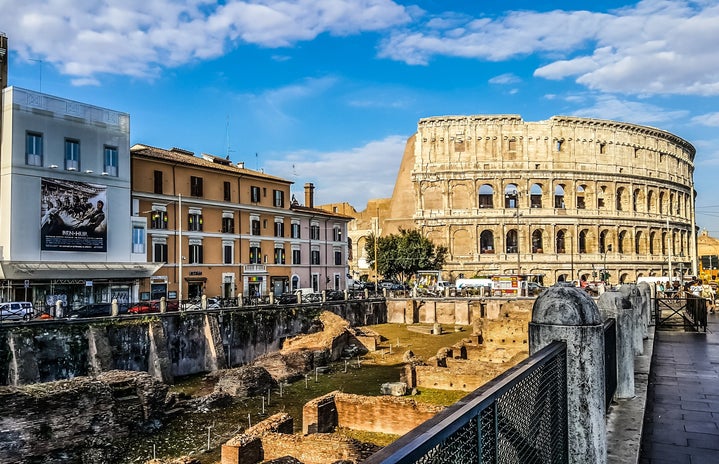LGBTQ+ people have always existed. It may be difficult to talk about identities in the most strict sense, given that these come to be in a historical and cultural context. Regardless, people who have not conformed to a heteronormative ideal—be it romantically, sexually, or through their gender expression—aren’t anything new.
The reality is that many scholars have blatantly lied, skimmed over, or chosen to dismiss discussions that revolve around their sexualities, gender identities, and gender expressions. For many scholars, it’s almost as if LGBTQ+ people only started existing in the 20th century.
In the context of societies that criminalized same-sex relationships under sodomy laws or scrutinized people who subverted gender expressions, being closeted was, for most people, the bread and butter of every day. Only a select few could live openly queer in specific contexts, most of these being people who belonged to a privileged artistic class or were of noble lineage.
That being said, here are some of the queer icons from one of the most culturally significant eras in Western culture: the Renaissance.
- Christina, Queen of Sweden
-
Having inherited the rule of Sweden at 18, Christina was one of the most controversial rulers of her time due to her refusal to comply with many traditions, especially with the way she chose to express herself throughout her life. She was also one of the most renowned female art collectors of the Renaissance, and a grand defender of the Arts.
Christina’s way of dressing, by today’s standard, would be considered androgynous, and as for her gender expression, it could be considered possibly non-binary. Many scholars and historical accounts describe that she often wore garments usually worn by men and she tended to mix and match traditionally-gendered clothing.
She also didn’t seem to adhere to traditional gender roles, as she expressed herself in both masculine and feminine roles throughout her life. Even when she exclusively dressed in clothes that were considered feminine, these were often seen as too risqué or sexually revealing for the era.
Scholars of the 20th century speculated that she might have been intersex, given that many accounts describe her as having masculine features and “behaviors” in addition to the way she dressed. However, investigations indicated that it was more probable that she had an endocrine condition that caused hormone imbalances rather than her being intersex.
The Queen was aware of the rumors that circulated ever since her reign, and near the end of her life, she stated in her autobiography that she was “neither Male nor Hermaphrod*** (censored slur), as some People in the World have pass’d me for.” Regardless, she lived her life freely, without particular care in the world for how others perceived her expression and actions.
Her sexual orientation was very ambiguous as well, as she sustained all sorts of relationships throughout her life, both sexual and non-sexual with men and women. One of her most notable relationships during her reign was recorded in passionate letters she wrote to her lady-in-waiting, Ebba Spare.
She abdicated from her reign after the monarchy was forcing her to marry and she refused, her excuse being that she was converting to Catholicism. She lived out the last of her years in Rome, contributing to the artistic scene and protecting artists’ rights to create art and express themselves. Even in Rome, she was considered a controversial person who abided by herself more than by any religion.
- Leonardo Da Vinci
-
Leonardo Da Vinci was a polymath; a genius of an innumerable amount of arts and sciences. His influence on modern science and artistic expressions is undoubtedly present, as his legacy still lives on.
However, the painter’s sexuality has been an object of debate by historians throughout the years despite there being written evidence from his pupils. Da Vinci developed close, intimate bonds with his pupils, both sexual and romantic.
In his 20s, he was actually charged with the crime of sodomy, and although he wasn’t convicted due to a lack of evidence, Da Vinci’s journals also mention the passionate nature of his relationships with his pupils.
His assistant and pupil, Francisco Melzi, inherited his estate. It was well-known that Leonardo kept his private life a secret and only tended to surround himself with young, attractive art students who became pupils or served as his muses.
Da Vinci remains one of the largest influential figures from the Renaissance, and maybe more scholars will begin to admit that their bias towards transmitting a normative ideal obstructs the important portrayal of a genius who was likely queer.
- Johann Joachim Winckelmann
-
Johann Joachim Winckelmann was one of the most influential figures of the 18th century that redefined Western painting, sculpture, literature, and philosophy with writings.
He is considered the father of the discipline of art history, as well as one of the founders of scientific archeology, which contributed to the modern conception of archeology.
Winckelmann retained both sexual and romantic relations with other men, and homoeroticism was quite common in his writings as a form of redefining and comprehending Greek, Roman, and Greco-Roman art.
The art historian’s most influential book was “The History of Art in Antiquity” from 1764, in which he was the first academic to separate art into historical periods. He was also the first person to suggest and apply scientific procedures to the field of Archeology in a successful attempt to transform into a field of study for higher learning rather than just an activity of leisure.
He retained many relationships and affairs with other men while he stayed in Rome after converting to Catholicism for the sole reason of researching Italian art and literature. His friendship with the Italian painter Raphael permitted him to gain access to the artistic circles where the art historian met many of his lovers, as proved by his correspondence with them.
So remember, the next time someone says queer people are a thing of the 20th century, make sure to correct them.


